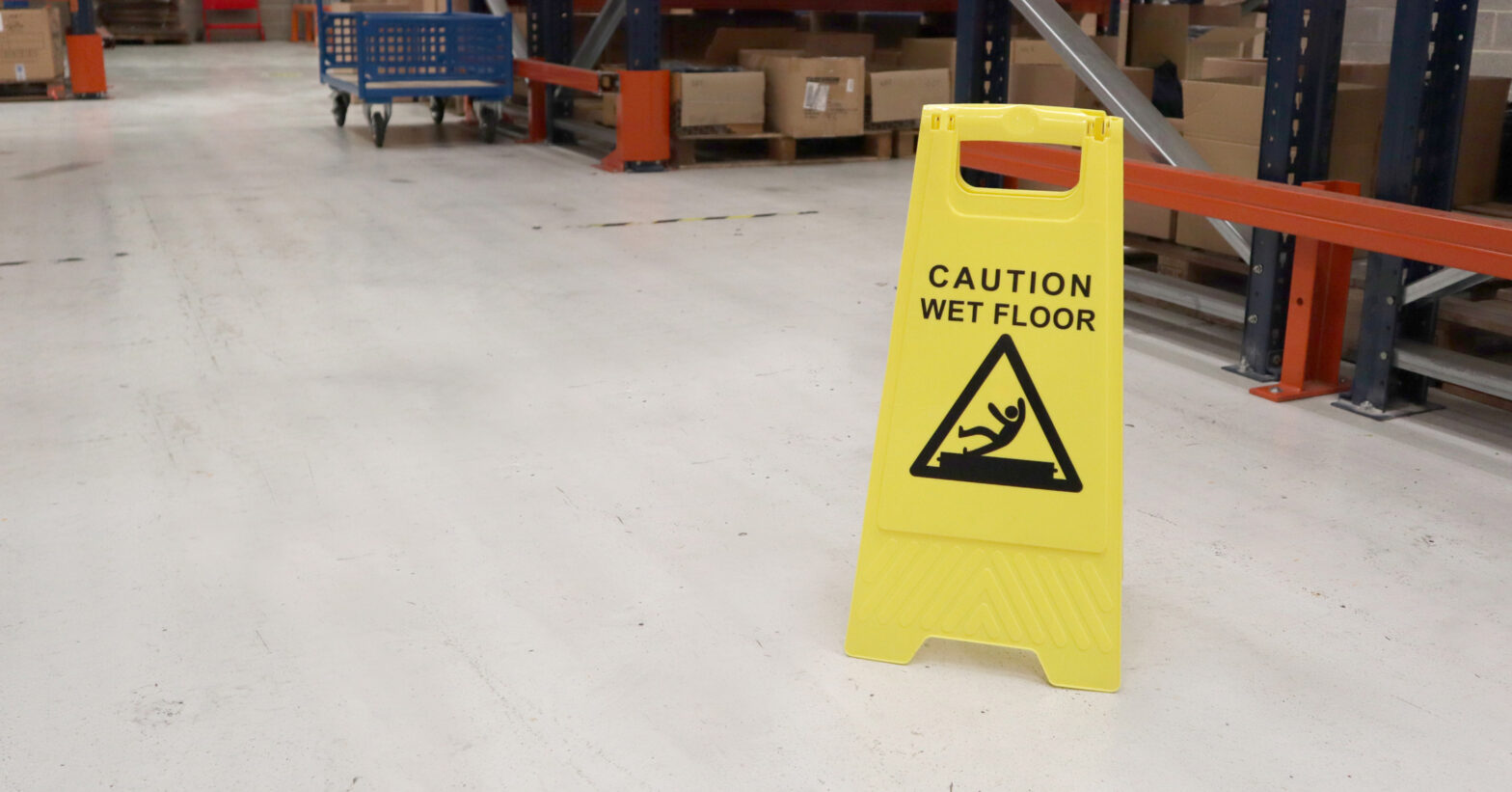
Promoting workplace safety is paramount for every organisation, and one of the most prevalent risks that employees face daily is slips, trips, and falls. These seemingly minor incidents can result in serious injuries and have significant implications for both employees and employers alike. However, with proactive management and the implementation of comprehensive strategies, the risk of slips, trips, and falls can be greatly reduced.
In this blog, we explain ten tips aimed at preventing these accidents in the workplace. From identifying potential dangers to developing a thorough safety plan, each recommendation is designed to create a safer environment for employees while fostering a culture of proactive hazard management.
Let’s explore these strategies in detail to safeguard the well-being of all individuals within the workplace.
1. Identifying potential dangers
- Undertake a meticulous examination of the workplace to pinpoint potential hazards. Beyond common culprits like loose cables and uneven floors, engage with your staff to glean insights into overlooked risks. This collaborative approach ensures a thorough understanding of the daily challenges employees face.
2. Maintaining a well-organised workplace
- Establish a system for storing equipment when not in use to prevent clutter.
- Enforce regular disposal of litter and timely emptying of bins to maintain cleanliness.
- Conceal cables using protective covers and implement secure closure of storage compartments.
3. Implementing safety signs and labels
- Strategically place safety signs and labels to highlight known hazards.
- Ensure the clarity of signage, effectively communicating specific instructions and warnings to all employees.
4. Wearing adequate footwear
- Provide employees with footwear that goes beyond mere compliance with safety standards, emphasising slip resistance and comfort.
- Regularly inspect and maintain footwear, encouraging employees to take an active role in caring for their protective gear.
5. Providing proper training
- Go beyond assumptions about employee knowledge and conduct comprehensive training sessions.
- Equip staff with the skills to use equipment effectively and instil a proactive approach to hazard reporting.
6. Ensure equipment is in working order
- Institute a stringent inspection and maintenance process for all workplace equipment, regardless of frequency of use.
- Clearly mark faulty equipment, promptly removing it from service until repairs or replacements are completed.
7. Regularly reviewing working surfaces
- Conduct a thorough evaluation of flooring types, implementing surfaces suitable for specific work areas.
- Regularly inspect for any signs of wear, including cracks or holes, and swiftly address maintenance needs.
8. Cleaning immediately
- Develop a protocol for swift and thorough response to spills, involving designated staff to manage the situation.
- Employ warning signs to communicate potential dangers, ensuring areas remain off-limits until completely safe.
9. Checking lighting
- Prioritise lighting assessments in all workspaces, with a particular focus on areas with low visibility.
- Regularly inspect existing lighting infrastructure and consider additional installations to enhance visibility, especially during darker months.
10. Having a thorough safety plan in place
- Establish a comprehensive safety plan incorporating regular risk assessments, hazard-spotting checklists, and ongoing training sessions.
- Develop a rotational schedule for systematic equipment and surface checks to maintain a proactive approach to safety.
- Implement a protocol for incident response, ensuring the safety of all involved parties in the event of unforeseen accidents.
Conclusion:
These strategies, when implemented collectively, create a robust framework for preventing slips, trips, and falls in the workplace, fostering a culture of safety and well-being among employees.




![stronghold global logo[94]](https://www.strongholdglobal.com/wp-content/uploads/2022/03/Stronghold-Global-Logo94.png)




